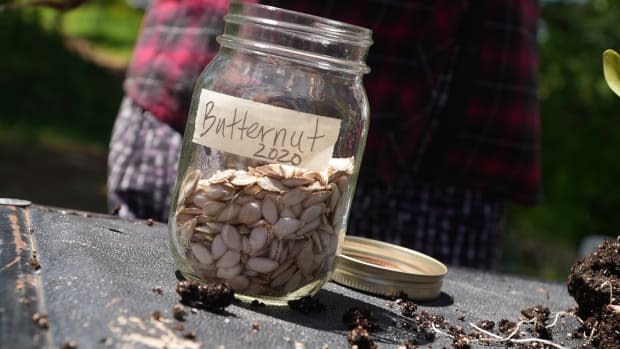
On a shiny sunny day, battling a swarm of black flies, 6 Indigenous ladies fulfilled 19 kilometres north of Fredericton to start off potting the a few sisters vegetation in an effort and hard work to reintroduce traditional foodstuff to the 6 Wolastoqiyik communities in New Brunswick..
The plants they applied have been flint corn, butternut squash and purple scarlet runner beans.
The introduction of European staples, these as sugar, lard and milk, have led numerous Indigenous persons to have an unhealthy romantic relationship with meals, claimed Amanda Myran, the well being products and services manager with the Wolastoqey Tribal Council.
And she said this project can support maintenance that romance.
“It became apparent that reconnecting our group members to our ancestral meals sources, like corn, beans and squash, would be a way of … drawing on that ancestral expertise to have balanced associations with food items yet again,” mentioned Myran, 30.

The task hopes to give elders and group customers in Pilick, Mataqaskiye, Welamukotuk, Sitansisk, Neqotkuk and Wotstak To start with Nations 60 of the a few sisters plant luggage, in section, to support with diabetes prevention.
A regional health survey done by the To start with Nations Info Governance Centre documented that 15 % of Very first Nations men and women in Canada had diabetes in 2018, a level three to 5 occasions bigger than the general population.
The report surveyed 24,000 Very first Nations men and women making use of an at-household computer system-assisted particular interviewing method.
Check out | Reconnecting communities with classic foodstuff:
But the wellness benefits of the program can lengthen outside of obtain to nutritious meals, Myran mentioned.
She retains a masters degree in nursing and she said she hopes that as communities master additional about what their ancestors ate, they will uncover healing in the understanding.
“I know that a significant piece of our therapeutic as Indigenous people is reconnecting to our means of recognizing, performing and being,” explained Myran, who is Dakota but grew up in a Wolastoqew local community.

The team planted the corn 1st and then put the bean and squash seeds around it.
The three vegetation function collectively to aid just one yet another develop: the corn delivers shade and enables the beans to run along its stalk, the beans assistance with nitrogen stages in the soil and the squash will offer you a all-natural mulch, said Cecelia Brooks, a common knowledge keeper. That all-natural mulch can preserve drinking water ranges for the vegetation, whilst the squash’s prickly leaves enable ward off animals, she claimed.
Brooks is connected to Sistansisk Initial Country but also has Mi’kmaq, Mohawk and Korean bloodlines. She’s labored with foods her entire lifestyle and stated the way the three sisters mature delivers a great deal of everyday living lessons.

“The reciprocity that they’re offering and getting from every other … which is the way that our society performs, it can be not constantly about getting,” stated Brooks.
“When we go out to harvest, whichever it is we’re going to harvest, we often inquire permission. We check with for that, that honour of getting in a position to just take some so that we can stay.”
At the time the beans and squash sprout they will be sent to the communities. Brooks stated she ideas to also display the First Nations communities healthier recipes that can be made with the three sisters, like salads and soups. The organizers hope the project will continue on to increase.
“I hope what it does, is it inspires persons to say, ‘You know, next yr I’m likely to construct myself a tiny mound, a small a few-foot spherical mound, and I’m heading to plant my a few sisters right in the floor,'” Brooks explained.